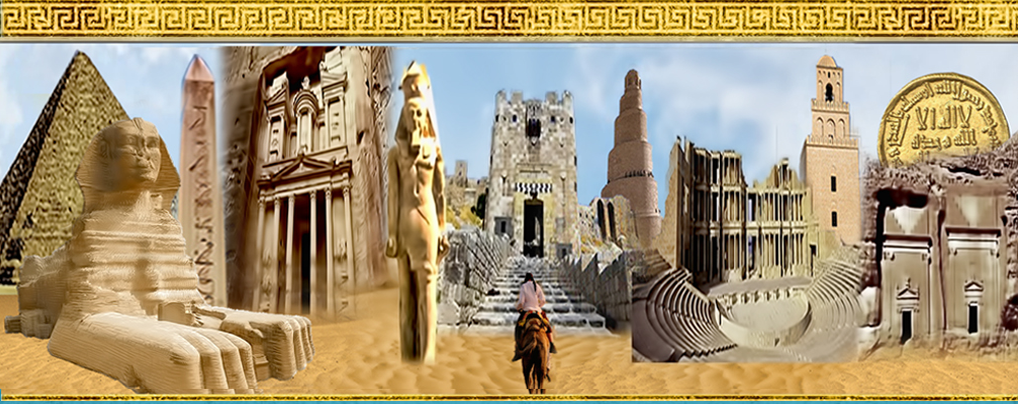Journal of the General Union of Arab Archaeologists

Abstract
النشاط الحيوى وضد الفطرى للتريكوديرما فى التراث الثقافى للصور الجدارية فى مقبرة مصرية قديمة [Ar]
لقد تم عزل أجناس فطر التريكوديرما Trichoderma sppمن أسطح الصور الجدارية بمقبرة «نفر-باو-بتاح». لقد تعرضت هذه المقبرة سابقاً فيىعام 2007 لهجوم ميكروبى مُتمثل فى A. niger و A. flavus وAlternaria alternata فى عام 2019 تم عزل فطر الاسبرجلس نيجر فقط، بالاضافة إلى عزل أنواع من فطر التريكوديرما والتى لم يتم عزلها من قبل خلال عام 2007. لقد تم تحديد ثلاثة أجناس من فطر التريكوديرما وفقًا لتأثيرها الحيوى على A.nigerو A flavusو A. alternataومن خلال تسلسلها فىGenBank إلى Trichoderma harzianum و T. hamatumوT. aureoviride.. ولقد تم تحليل اللوحات الجدارية فى حجرة الدفن بتقنية تحليل EDX الذى أظهر أن الطبقة الأرضية تتكون من الكوارتز والكالسيت والجبس، بينما أظهر تحليل المواد الملونة إستخدام الألوان المُتمثلة فى الأخضر المصرى والأزرق المصري والهيماتيت. ولقد أثبت تحليل الرامان أن الوسيط اللوني المُستخدم كان بمثابة وسيط صفار البيض. لقد تم قياس المواد الملونة باستخدام جهاز السبيكتروفتوميتر مرتين: الأولى خلال عام 2007م والثانية بعد نمو Trichoderma خلال عام 2019. ولقد أظهرت النتائج أن عملية التمثيل الغذائي خارج الخلية لفطر التريكوديرما اثر على اللون الأزرق المصري والأخضر المصري وتجدر الإشارة إلى أن نتائج التحليل قد أظهرت قدرة فطر التريكوديرما على تثبيط نمو A.niger وA.flavus وAlternaria alternata ، والتى تم العثور عليها سابقًا خلال عام 2007م. ولقد تم تحديد العوامل القياسية لتعزيز نمو فطر التريكوديرما،حيث أظهرت النتائج أن 5٪ من NaCl: NaNO3 (1: 1) كان بمثابة أفضل تركيز للنشاط المضاد للفطريات لجميع أنواع Trichoderma عند درجة الحرارة الواقعة بين 30و 35 درجة مئوية في وسط حمضي. تجدر الإشارة إلى أن عملية الحفظ الحيوي للتراث الثقافى مازالت قليلة الاستخدام فى نطاق الشرق الأوسط، وهى تعتبر منهجية علمية وتقنية علاج صديقة للبيئة، وذلك مع الأخذ فى الإعتبار للمخاطر التى تُسبب التغير اللوني، بالإضافة إلى كونها تقنية سهلة التطبيق، حيث يُمكن تطبيقها في نطاق الحيز المكاني والبيئات المفتوحة أو في نطاق المتاحف.
[En]
Trichoderma spp. was isolated from the mural paintings’ surfaces of the tomb of Nefer-Bau-Betah. This tomb was previously deteriorated in 2007 by Aspergillus niger, A. flavus, and Alternaria alternata but in 2019, the tomb was deteriorated by only A. niger, and Trichoderma species that had not been isolated before in 2007. Three species of Trichoderma were identified according to their bioactivity effect on these microorganisms and by their sequences in the GenBank to Trichoderma harzianum, T. hamatum, and T. aureoviride. Furthermore, mural paintings in the burial chamber were characterized by EDX analysis which indicated that the ground layer consisted of Quartz, Calcite and Gypsum, while the pigments were characterized as Egyptian green, Egyptian blue, and hematite (Fe2O3). The binding media was egg yolk according to the spectrum of Raman spectroscopy. The pigments were assayed by the spectrophotometer but it caused a little effect in the color change of the pigment inside the tomb especially the blue and green Egyptian pigments, while it caused less effect in the color change of red hematite pigment. The optimization factors for increasing the bioactivity of the Trichoderma spp. were 5% of sodium nitrate and sodium chlorine that crystallize in the tomb, where the average temperature is between 30:35°C in acidic pH (pH=5.5). These conditions helped Trichoderma species to grow and work as antifungal factors in the tomb A. niger, A. flavus, and Alternaria alternata. Trichoderma spp. can be used as a new methodology for controlling the deterioration of cultural heritage. It is an eco-friendly methodology, risk-free when controlling the color change, and easy to apply anywhere in vivo or vitro in cultural heritage found in open air or in the museums.
Recommended Citation
ElHagrassy, Abeer
(2022)
"TRICHODERMA SPP. IN CULTURAL HERITAGE MURAL PAINTINGS OF ANCIENT EGYPTIAN TOMB, THEIR ANTIFUNGAL AND BIOACTIVITY,"
Journal of the General Union of Arab Archaeologists: Vol. 7:
Iss.
2, Article 10.
Available at:
https://digitalcommons.aaru.edu.jo/jguaa/vol7/iss2/10

